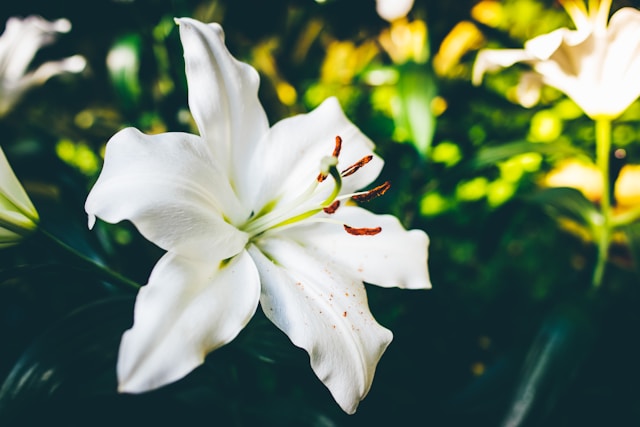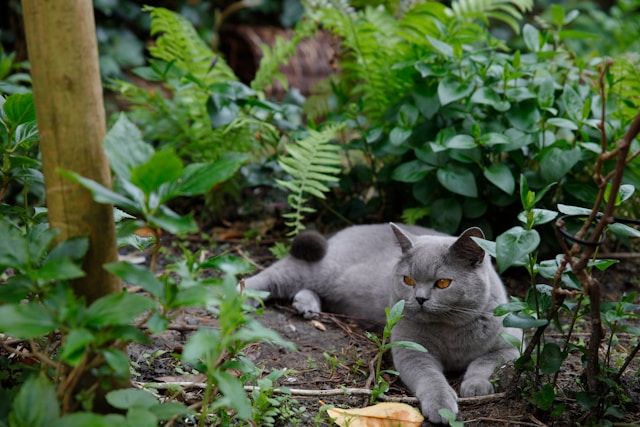Lily Plants and Their Threat to Pets

These tall perennials typically bloom during the spring, adding a touch of beauty to any garden or indoor space. Many associate lilies with the Easter holiday as they flood grocery stores and greenhouses during this time.
However, what may not be common knowledge is that lilies can be exceptionally hazardous to pets, especially cats. It's crucial to distinguish between toxic and safe lilies to protect your pet.
Lily Ingestion Spells Danger for Pets
Dr. Ahna Brutlag, Associate Director of Veterinary Services and a Senior Veterinary Toxicologist at the Pet Poison Helpline, emphasizes that exposure to any part of a toxic lily can lead to abrupt kidney failure in cats. This includes all plant components, such as the flowers, pollen, leaves, and even the water from the vase where the lilies are arranged. The water may be particularly tempting to cats, who are accustomed to drinking from various sources around the house.
Brutlag stresses that ingesting any part of the plant or its water is a genuine emergency, and affected pets should be taken to a veterinarian immediately.
Identifying Toxic Lilies
So, which lilies should you steer clear of, and which are safer for your home? According to the Pet Poison Helpline, "true lilies" belonging to the Lilium family and daylilies from the Hemerocallis family are highly toxic to cats, potentially causing sudden kidney failure. Here are examples of common poisonous lilies:
-
Easter lily (L. longiflorum)
-
Tiger lily (L. tigrinum or L. lancifolium)
-
Stargazer lily (L. orientalis)
-
Japanese show lily (L. speciosum)
-
Asiatic hybrid lilies (varieties of Lilium species)
Although dogs do not typically experience kidney failure from consuming these lilies, ingestion can lead to upset stomachs.
Heart-Related Risks for Pets
Despite its name, Lily of the Valley (Convallaria majalis) is not a "true lily." However, it is a poisonous plant that can endanger the lives of both dogs and cats. The plant and its bulb contain cardiac glycosides, a toxin that can induce vomiting and life-threatening heart issues, potentially causing long-term heart damage with altered heart rate and rhythm. Most small ingestions lead to stomach upset, while larger ingestions raise more significant concerns.
Lilies with Lower Toxicity
While many lilies can pose health risks for pets, the following ones are considered less toxic as they do not belong to the true lily or day lily families, despite their names. Nevertheless, health issues may still arise, so if you decide to have these plants at home, it is advisable to keep them out of your pet's reach:
-
Calla lily (Zantedeschia species)
-
Peace lily (Spathiphyllum species)
-
Peruvian lily (Alstroemeria aurea)
Calla and peace lilies have a unique defense mechanism. Chewing their leaves releases numerous needle-like calcium oxalate shards into the predator's mouth, leading to severe irritation and swelling in the mouth, throat, and gastrointestinal tract. In rare cases, the swelling can be severe enough to affect breathing in smaller pets. Peruvian lilies do not possess this defense mechanism and typically only result in vomiting or diarrhea if ingested.
Recognizing Signs of Possible Lily Plant Ingestion
While there are evident signs of toxicity-related health issues in pets, there are also indicators that can help you detect potential toxic plant ingestion before your pet's condition deteriorates.
Consider the case of Georgia, a two-year-old Scottish Fold cat from Dallas, Texas. Her owners became concerned when they noticed bright yellow pollen on her nose. Initially, they assumed she had gotten into turmeric spice in the kitchen. However, upon closer inspection, they realized she had been nibbling on their Asiatic lily plant, with the pistol and stamen missing. The yellow dust on Georgia’s nose was, in fact, pollen from the lily.
Georgia started to display lethargy, prompting her owners to rush her to the veterinarian. Fortunately, she fully recovered, and the plant was removed from their home.
If you have lily plants in your house or yard, remain vigilant for these clinical signs of potential toxic plant ingestion:
-
Decreased appetite
-
Lethargy
-
Hiding
-
Vomiting
-
Diarrhea
-
Bad breath
-
Dehydration
-
Inappropriate urination or increased thirst
-
Seizures
Get insurance plans with wide-ranging coverage options












